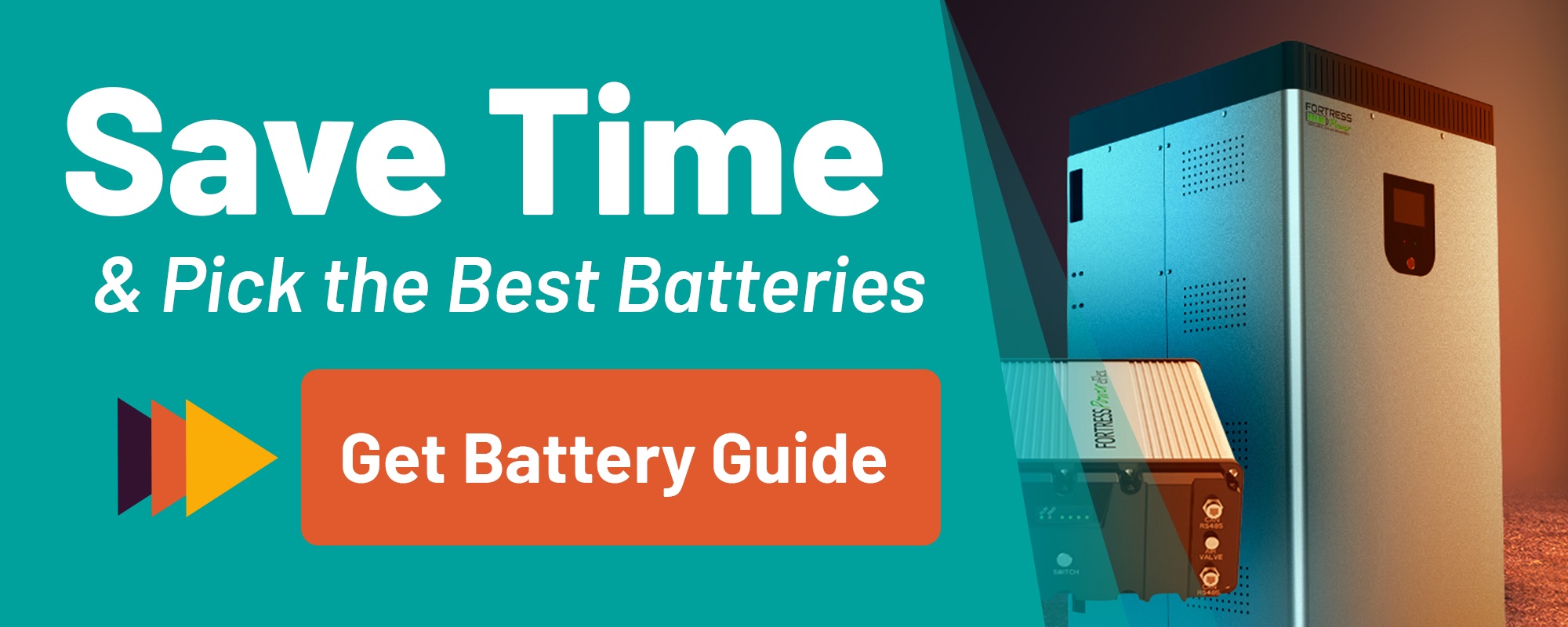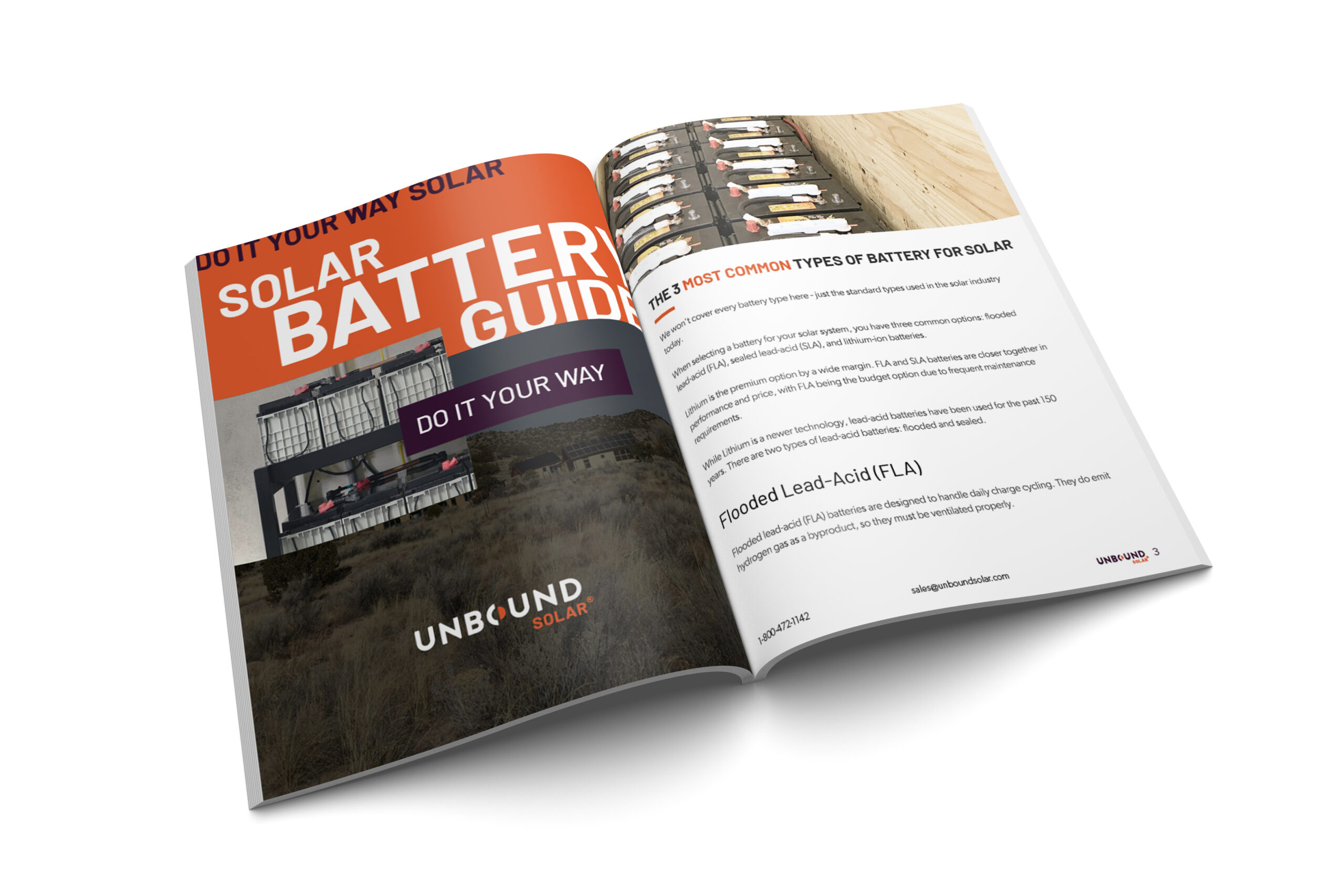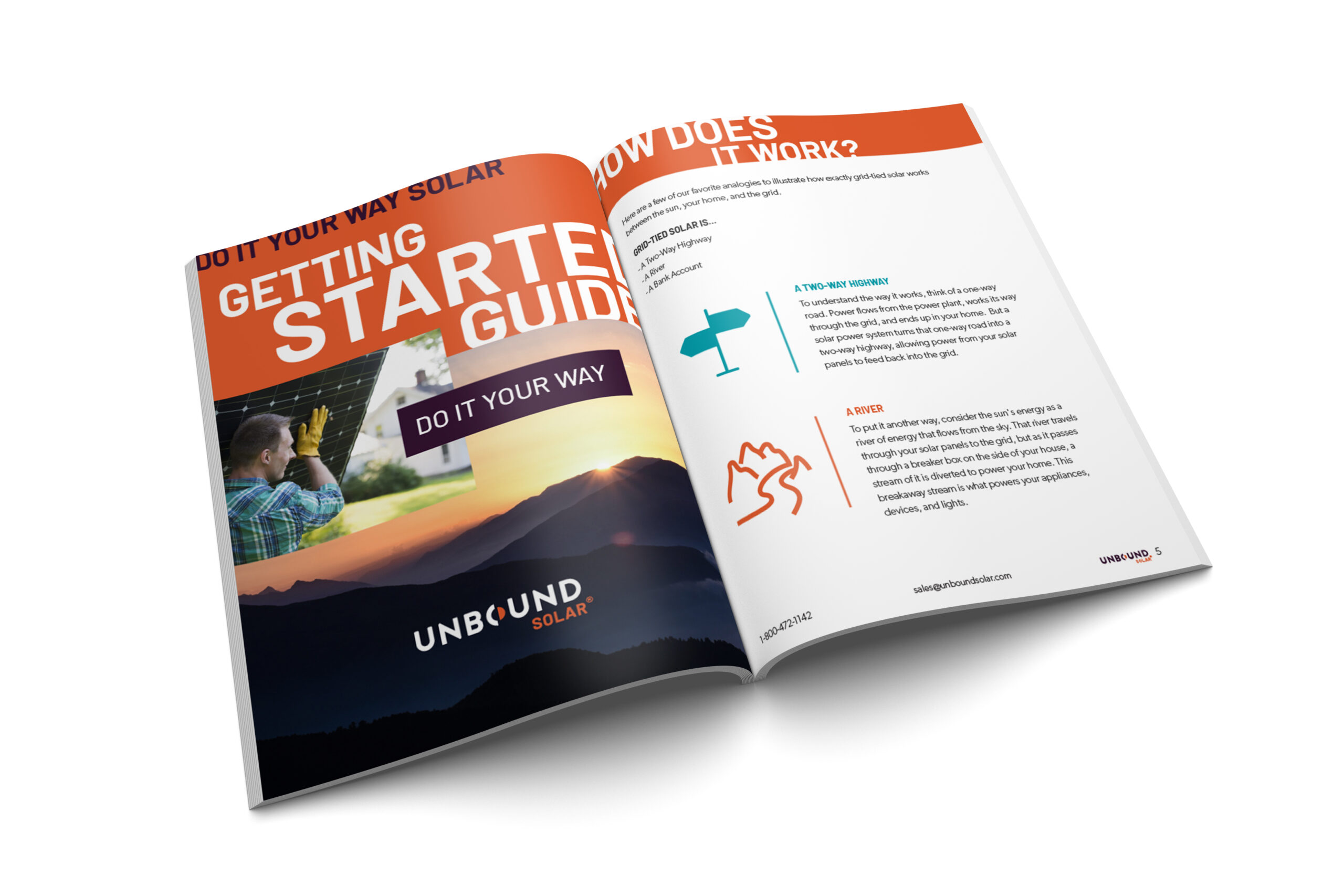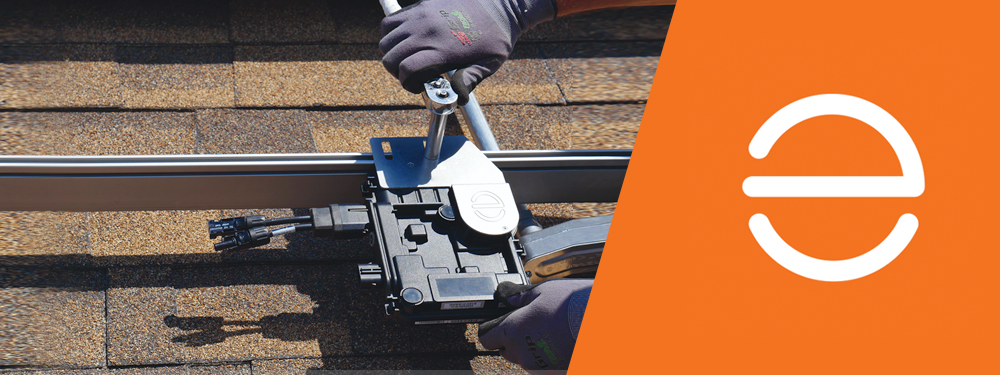Lately, we’ve received a spike in the number of calls from people who are curious about pairing backup power to their solar system.
There’s quite a lot to cover on this topic, and we realized we didn’t have a good resource that goes over the most frequently asked questions about backup power. So we’re here today to fix that!
I asked Todd, one of our senior design techs, to answer the most common questions he hears about backup power systems during the consultation process. Here’s what he had to say.
Be Prepared For Sticker Shock: Battery Backup Is Expensive
First things first: batteries are expensive.
They cost more—and provide less backup power—than a traditional gas generator. In many cases, battery backup costs more than the solar system itself!
People are often shocked to learn the true cost of battery backup, and for many the conversation starts and ends there. We like to be transparent about pricing (we don’t want to waste anyone’s time) so we do our best to set these expectations upfront.
To paint a picture of the cost of backup power, here’s a table comparing the equipment costs of grid-tie solar systems, both with and without backup. For reference, the average American household uses about 914 kWh of electricity per month, which works out to 6-7 kW of solar.
| System Size (PV Array) | Monthly kWh output |
|---|---|
| 4.8 kW | 720 |
| 7.2 kW | 1080 |
9.6 kW |
1440 |
Two Types of Backup Power: Generators vs. Batteries
You have two options for backup power: gas generators and batteries.
Gas generators cost less and provide more backup power. They’re useful if you’re looking for the most cost-effective way to keep your power supply at full capacity during an outage.
Batteries are typically sized to only back up critical loads, due to their higher cost. However, they have the benefit of being longer-lasting and eco-friendly, with the added ability to recharge from solar.
Here’s a full list of pros and cons for each option:
Gas Generators
- More affordable upfront
- More backup capacity per $ spent
- Easier to retrofit with solar
- Needs to be re-fueled
- Requires maintenance
- Noisy
- No uninterrupted backup – takes a few minutes to switch on and power up
- Some property zoning laws don’t allow them
Battery Backup
- Uninterrupted power supply – backup kicks in instantly
- Longer lifespan
- Quiet operation
- Cleaner – no refueling needed
- Minimal maintenance
- More costly up-front
- Less backup capacity per $ spent
Do I Need Backup Power?
In many situations, power outages are nothing more than a minor inconvenience. If grid power is stable and you only experience 1-2 outages per year, it’s easy enough to just light up some candles and wait it out. A dedicated backup system in those situations is probably not worth the investment.
But there are certain scenarios where backup power can be invaluable:
- Living in an area prone to natural disasters
- Living in an area with frequent power outages due to an unreliable power grid or weather related blackouts
- Running critical equipment, appliances or electronics that must stay on during an outage
- Any other critical need for power
Backup power isn’t required (or even recommended) for all grid-tie solar owners, but it becomes invaluable in areas prone to outages. It can also be indispensable if you are running equipment that requires uninterrupted power—for example, a well pump for household water or livestock.
We encourage you to think about whether uninterrupted backup is a necessity, as in some of the cases above. Many people who explore battery backup realize the investment isn’t worth it, and end up opting for a simple generator (or no backup at all).
Can I Start With Solar and Add Backup Later?
Many people ask about starting with solar and then adding batteries sometime down the road when their budget allows. This is doable, but it’s important to plan your system with future expansion in mind.
Certain inverters are configured to easily handle the addition of batteries. Other inverters don’t work with batteries at all, and they will need to be swapped out, or require that you add more costly equipment. If you make the wrong choice up front, you’ll spend several thousand dollars replacing equipment down the line.
We recommend the Sol-ark storage-ready inverter or the Enphase Energy System, if you want to start out with a grid-tie system and add batteries down the road.
You can also start with most standard grid-tie inverters, and AC couple a backup system. But not all inverters are as flexible depending on size, so we typically recommend Enphase Energy System for an AC Coupled design.
Adding Backup to an Existing Solar System
If you already own solar and want to add backup power, the installation process is a bit more complicated. There are a few ways to add backup to an existing system: AC coupling, DC coupling, or replacing the inverter with a storage-ready inverter.
To do this, you will need to replace and re-wire, and possibly move existing equipment to swap in or add on a compatible inverter. You may also need to modify your electrical service panel to add a dedicated backup panel, which takes a fair amount of electrical work.
Since retrofitting an existing system with backup is more complex, we wrote a full article dedicated to this topic: “How to Add Battery Backup to an Existing Grid-Tied Solar System.”
Backup For High Surge Loads
Another thing to consider is what type of appliances or other loads you are backing up, and whether you need to account for high-surge loads.
Appliances have two ratings: a surge rating and a continuous rating, sometimes known as “starting watts” and “running watts.”
The surge rating is the amount of power required to start an appliance, while the continuous rating is the power needed to keep it running.
Some appliances need a large surge of power to turn on. If you have any high-surge loads—for example, a well pump, HVAC system, or any other large inductive loads that use a pump, motor or compressor—your options may be limited to hybrid inverters like the Magnum MS or Outback Radian series. These are essentially off-grid inverters, designed with surge capacity to power appliances with a high starting current and can be scaled for even larger demands.
Keep in mind, as the size of the backed-up load increases, the required battery storage capacity typically increases as well.
Backup Power Options: A Summary
The main takeaway is that there are plenty of different backup power options, each of which shines in specific applications. It’s important to plan ahead to save yourself the money (and headaches) replacing equipment down the line.
There are three main options:
Grid-tie inverters
Standard grid-tie inverters don’t work with batteries, but battery backup can be added via AC Coupling or DC coupling. Options are limited and the system is typically more expensive because there are two inverters (a grid-tie inverter and separate backup inverter.)
Storage-Ready Inverters
Storage-ready inverters allow you to start with solar and add battery backup later. These inverters are not designed for full off-grid operation and require a grid connection. They work like a standard grid-tie inverter, but with a connection for batteries to provide a relatively small or controlled amount of backup power.
Hybrid Inverters
Hybrid inverters work both on and off-grid, ideal for higher power and high surge requirements, or anyone who wants full off-grid functionality. However, hybrid inverters require a battery bank to function, so you need to install batteries from the start.
| Grid-Tie Inverters | Storage-Ready Inverters | Hybrid Off-Grid Inverters | |
|---|---|---|---|
| Works with/without batteries? | No | Works with or without batteries | Requires batteries to function |
| PV production when grid power is out? | No | Yes (with batteries) | Yes |
| Ease of installation | Easiest | More Difficult | Most Difficult |
| Price range | $$ | $$$ | $$$$ |
| Surge capacity | N/A | Limited | Higher surge capacity |
| Examples |
| ||
| Use cases |
|
|
|
Need Backup Power?
If you are interested in learning more about backup power systems, reach out to our solar design team for a free consultation.





